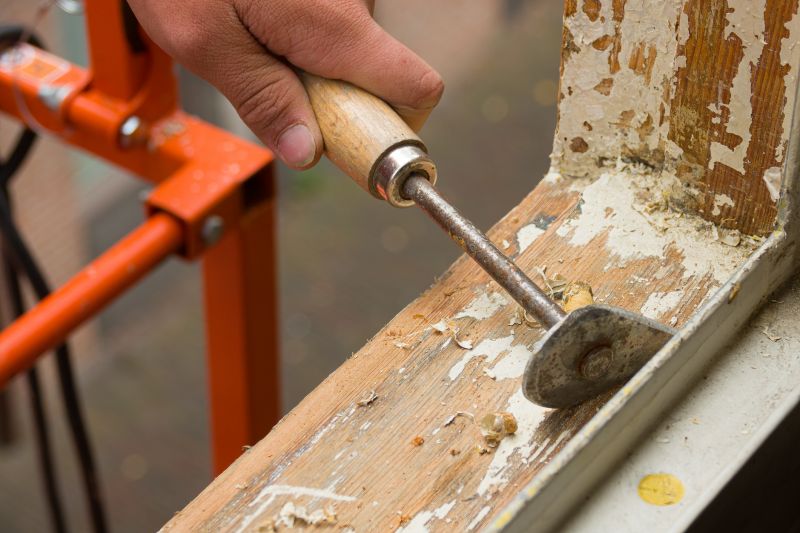Ultimate Guide To Timber Rot Repair Products For Wood Preservation
Get insights into the most effective products to combat timber rot and preserve the integrity of your wooden structures.
 Timber rot is a common issue that can compromise the structural integrity and aesthetic appeal of wooden structures, including decks, fences, and outdoor furniture. Addressing timber rot promptly with the right products is essential to prevent further damage and maintain safety. Repairing timber rot involves identifying affected areas, removing decayed wood, and applying suitable treatments to restore durability. A variety of products are available to assist in these repairs, ranging from preservatives and consolidants to fillers and sealants. Choosing the appropriate products depends on the extent of the damage, the type of wood, and the environmental conditions.
Timber rot is a common issue that can compromise the structural integrity and aesthetic appeal of wooden structures, including decks, fences, and outdoor furniture. Addressing timber rot promptly with the right products is essential to prevent further damage and maintain safety. Repairing timber rot involves identifying affected areas, removing decayed wood, and applying suitable treatments to restore durability. A variety of products are available to assist in these repairs, ranging from preservatives and consolidants to fillers and sealants. Choosing the appropriate products depends on the extent of the damage, the type of wood, and the environmental conditions.
Top Overall Option
Wood Repair Epoxy System
A comprehensive epoxy repair system designed to fill, rebuild, and seal damaged wood. It offers excellent adhesion, durability, and resistance to moisture, making it suitable for various timber rot repair projects. When properly applied, it can restore structural integrity and provide a smooth surface for finishing. Ideal for use on decayed beams, posts, and other wooden components requiring reinforcement.
Types of Products For Timber Rot Repairs
Wood Preservative Treatments
Chemicals designed to penetrate wood and prevent future decay, protecting against rot and insect damage.
Epoxy Wood Fillers
Two-part compounds used to rebuild missing or damaged wood sections with strong adhesion and durability.
Consolidants
Products that penetrate and strengthen weakened wood fibers, helping to stabilize decayed timber.
Sealants and Waterproof Coatings
Protective layers that prevent moisture ingress, extending the life of repaired wood.
Wood Hardness Enhancers
Chemicals that increase the hardness and resistance of soft or decayed wood surfaces.
Rot Repair Kits
All-in-one kits containing primers, fillers, sealants, and instructions for comprehensive repairs.
Exterior Grade Paints and Stains
Finishing products that provide additional protection and aesthetic appeal after repairs.
Borate Treatments
Insecticidal and fungicidal solutions used to treat and prevent timber decay.
Rust Inhibitors
Products to prevent corrosion of metal fasteners in timber structures.
Moisture Meters
Tools to assess moisture levels in wood and identify areas at risk of rot.
Sandpapers and Abrasives
Materials used to prepare surfaces for treatment or finishing.
Wood Stabilizers
Chemicals that reduce swelling and shrinking, maintaining wood stability.
Popular Choices
Versatile kits combining epoxy resins and fillers suitable for various timber rot repairs.
Convenient options for treating large areas or multiple pieces of timber.
Penetrating products that strengthen decayed wood fibers effectively.
Popular for sealing repaired areas against moisture intrusion.
Easy-to-apply fillers for quick restoration of small damaged sections.
Commonly used after repairs to enhance appearance and provide additional protection.
Products that help remove surface fungi and mold before repairs.
Essential tools for assessing the extent of moisture-related damage.
Widely used for their effectiveness in preventing future decay.
Popular for preparing surfaces prior to applying repair products.
Used in conjunction with repairs to provide added support.
Commonly applied before painting metal fasteners or hardware.
Effective timber rot repair often begins with thorough cleaning and removal of decayed material. Once the damaged wood is cleared, consolidants can be applied to strengthen remaining fibers and prevent further decay. Fillers and epoxy resins are commonly used to rebuild missing or compromised sections, providing a solid base for finishing coats. Protective sealants and stains can then be applied to shield the repaired area from moisture and future deterioration. Proper application and compatibility of these products are crucial for long-lasting results.
Using high-quality repair products ensures that the restoration process is efficient and that the repairs hold up over time. It is important to follow manufacturer instructions carefully and consider factors such as weather conditions and wood type. Regular maintenance and inspections can help catch early signs of rot and facilitate timely interventions. Investing in the right products not only extends the life of wooden structures but also enhances their appearance and safety. Whether undertaking small repairs or large-scale restoration, selecting suitable products tailored to your specific needs is key to successful timber rot repairs.
Key Buying Considerations
- Extent of damage: Assess whether the rot is superficial or structural to select appropriate products.
- Type of wood: Different products may be better suited for softwoods versus hardwoods.
- Environmental exposure: Consider weather conditions and moisture levels in your area.
- Application method: Some products require mixing, brushing, spraying, or simple application.
- Compatibility: Ensure the chosen products are compatible with existing finishes or treatments.
- Ease of use: Look for user-friendly products if you have limited experience with repairs.
- Durability: Select products rated for outdoor or high-moisture environments if applicable.
- Safety precautions: Check for necessary protective gear and ventilation requirements.
- Drying and curing times: Consider how long repairs will take before they can be used or painted over.
- Cost and availability: Balance quality with budget and ensure supplies are accessible.
- Long-term maintenance: Choose products that support ongoing protection and easy reapplication.
- Environmental conditions: Avoid products that may be affected by extreme temperatures or UV exposure.
